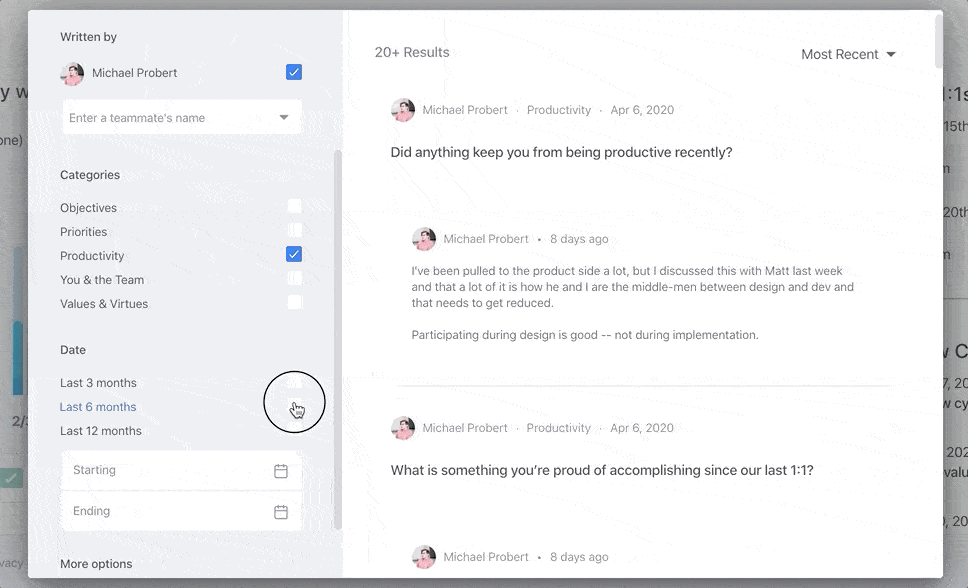For most managers and employees, year-end performance reviews are like going to the dentist—if your dentist also hated the experience of looking inside people’s mouths.
A CEB study on the subject confirmed that nearly everyone is unhappy with our current method of evaluating performance. In it, 95% of managers said they were dissatisfied with their performance management systems, and 90% of HR heads reported that the system didn’t yield accurate information.
Despite this dissatisfaction, yearly performance reviews are still the norm in most American workplaces (with some notable exceptions). The argument in their favor is that a flawed system is better than no system at all, and organizations need some method of keeping track of how team members are doing so they can reward good behaviors and correct bad ones.
The problem is that we place so much importance on annual reviews that they become sources of intense anxiety for employees, who often feel like they have no idea what their manager is about to tell them. Meanwhile, they’re nearly as stressful for managers, who feel intense pressure to appease both their team members and their own superiors.
It doesn’t have to be this way. As a manager, you can set both yourself and your employees up for success in year-end reviews. And it starts by taking advantage of the regular one-on-one meetings you should already be having.
Prep for Year-End Reviews With One-on-Ones
There’s a fundamental, structural problem with the year-end review: Employees get a sudden spike in manager feedback followed by months of relative quiet. In the time between reviews, employees have no idea how their work is being perceived, and no chance to explain things from their perspective.
Some businesses have tried to tweak the structure by switching from year-end reviews to six-month or quarterly reviews, but that leaves us with the same problem, in which rich feedback remains the exception rather than the rule. The solution is to implement regular one-on-ones in which employees and managers check in and realign about performance.
CEB’s research illustrates the difference between the two models with a helpful graph:

This doesn’t mean that every one-on-one should feel like a year-end review, quite the opposite. One-on-ones aren’t a chance for employers to pass judgment on an employee, but to gain context about what’s going right and wrong, and give employees the opportunity to work through issues.
If you’re using one-on-ones right, they can take the pressure off year-end reviews, because you’ve already established a relationship built on collaborative, constructive feedback. Below, we’ll get into the specifics of how to do that.
Try our pick for best performance review template
We developed a template that’s simple to use, backed by powerful research, and tested in over 100 performance reviews. And you’ll also get a FREE guide that will help you give a great review!
Document Performance All Year Round
If you sit down to write an employee’s annual review and all you can come up with is a vague impression about how they did last year, you’re dead in the water. You need to be able to back up everything you say, positive and negative, with specific examples from throughout the year. To do that, you need to document each individual’s performance and be able to easily access it to write the overarching narrative of their year at work.
More than any other resource, your notes from one-on-one meetings are the best way to ensure your review accurately reflects your employee’s performance. Raw numeric data, without the benefit of context, will never give you the whole picture, and can lead you to make the kind of reviews that shock your team.
As a simple example, a spreadsheet might show that one employee turned in work on time much more consistently than their peer. But it would fail to note that the on-time employee’s work was often slipshod, or that the employee who ran late was struggling with more difficult assignments or personal challenges. Your one-on-ones, on the other hand, give you the chance to find and make a note of that crucial context.
Uptick is designed so that if managers ask the right questions and take helpful notes, they can populate year-end reviews with content from a year’s worth of one-on-ones.

Just as crucially, employees should also be documenting what you’ve discussed in meetings, including their successes, their trouble spots, and their goals. They can use this data to fill out their self-review and make a case for why they deserve that promotion or that raise. And if there’s a point of contention between you and an employee, you can both refer back to the record.
One-on-one documentation is your ally when you need to make recommendations about a team member’s path forward. If you have to ask HR that someone be fired, you can show them a record of commitments that this person made and then failed to keep. But even more importantly, these notes will back you up when you give glowing reviews.
One-on-one notes are your best defense against feeling like a traffic cop who has to hit a negative feedback quota.
If all goes right, you’ll be able to prove that you have an exemplary team full of people who are growing and succeeding in their roles.
Clarify Expectations to Avoid Year-End Review Surprises
Perhaps the most dread-inducing part of annual performance reviews is the element of surprise. Employees can walk in expecting to hear glowing praise, and be blindsided by criticism. Writer Katie Heaney accurately described this sensation from an employee’s perspective: “…you’ll be called into a meeting with your supervisor, who will tell you why you’re a worse employee than you thought, and possibly present you with a piece of paper summarizing the reasons why.”
Likewise, managers often assume that their reports are ready to hear tough feedback, and are unprepared when their team members walk away hurt and angry. Those hurt feelings have real consequences: A 2015 survey by HR company TriNet found that 28% of Millennials looked for a new job after a poor performance review (and 15% cried). The survey also found that 74% of Millennials feel “in the dark” about how managers and colleagues perceive their performance, and 40% thought the process would be improved by more specific feedback.
The cure for annual review shock is for managers to communicate specific expectations on an ongoing basis and regularly check in to ensure employees are meeting them. Here’s what that looks like in practice:
- Set incremental benchmarks in every one-on-one to ensure your team members know what they’re supposed to be doing. These should include both short-term priorities and long-term developmental goals, but you should regularly check on the progress of each. That way, an employee doesn’t have to wait until review time to hear they’ve gotten off-track or they aren’t meeting expectations. Most importantly, it gives them the chance to fix the problem before it hurts their career.
- Provide detailed roadmaps for roles during onboarding and whenever an employee steps into a new position. In these, delineate specifically what an employee is expected to know and do by month one, three, six, etc. Not only will this help your team members get a sense of how to structure their time and effort, but it’ll also keep you honest by not expecting an employee to take on more than their role requires.
- Provide both “feedback” and “feed-forward” on completed and upcoming projects. Take time with your team member to reflect on what went right and wrong with the work they’ve completed, and collaboratively set goals for the work to come.
A New Beginning for Year-End Reviews
Year-end reviews have such a bad reputation because the review process feels opaque and arbitrary to employees. That’s a serious problem for businesses—if a team member thinks that what they do doesn’t matter, they don’t have much of an incentive to try their best. Maybe even sadder, if a team member feels like their manager isn’t on their side in reviews, it can destroy trust, communication, and the entire working relationship.
The alternative to this is a system where managers and team members walk into year-end reviews knowing there will be no surprises. Each party can feel confident they’re working from the same set of expectations, informed by context and collaboration. As a manager, the tools to make this change are already at your disposal. When you put them to work effectively, you’ll find yourself with a lot more positive things to say during next year’s reviews.
Check Out Our New Course:
"How to Give a Great Performance Review"
Most people HATE performance reviews. But they don’t have to awful, or even awkward. Whether you’re creating your own review process or you’re executing what your company already has, you can still make a performance review great for your team members!


